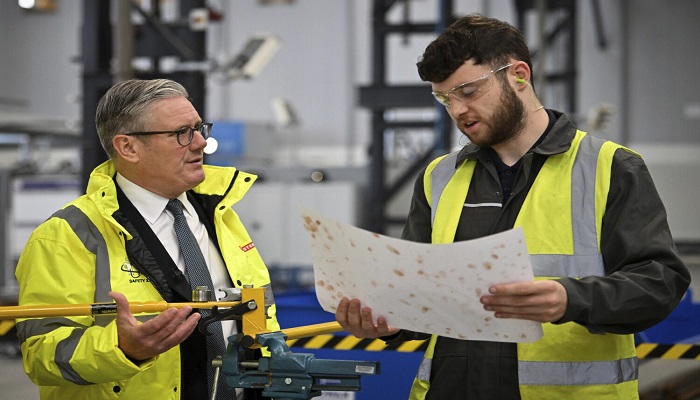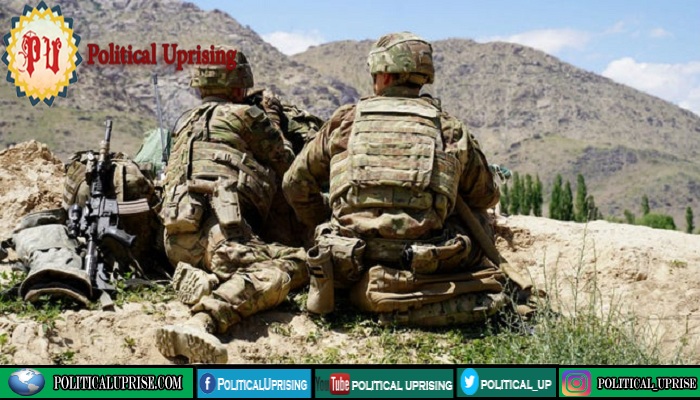Britain has unveiled a major shift in its defence strategy, focusing on drones, cyber warfare, and digital capabilities to counter modern threats from Russia, nuclear challenges, and cyber-attacks—moving away from reliance on large traditional ground forces.
Responding to US President Donald Trump‘s insistence that Europe take more responsibility for its own security, Prime Minister Keir Starmer has pledged the largest sustained increase in British defence spending since the end of the Cold War.
But with limited finances, the government’s plan envisages making the army more lethal, not much larger, by learning from Ukraine, where drones and technology have transformed the battlefield.
Defence Secretary John Healey said Britain’s adversaries were working more in alliance and technology was changing how war was fought.
“Drones now kill more people than traditional artillery in the war in Ukraine and whoever gets new technology into the hands of their armed forces the quickest will win,” he said.
UK PM Keir Starmer to Finalize Deal Enhancing Post-Brexit EU Ties
Starmer commissioned a Strategic Defence Review shortly after he was elected in July, tasking experts including the former NATO boss, George Robertson, and a former Russia adviser to the White House, Fiona Hill, with formulating a plan for the next 10 years.
Despite cuts to the military budget in recent years, Britain still ranks alongside France as one of Europe’s leading military powers, with its army helping to protect NATO’s eastern flank and its navy maintaining a presence in the Indo-Pacific.
But the army, with 70,860 full-time trained soldiers, is the smallest since the Napoleonic era and the government has said it needs to be reformed given the growing strategic threats.
James Cartlidge, defence policy chief for the opposition Conservatives, said the government had failed to prove it could finance the review’s recommendations, meaning it had “dodged the big decisions”.
“An SDR (Strategic Defence Review) without the funding is an empty wish list,” Cartlidge told lawmakers, many of whom criticised the government for not releasing the review first to parliament rather than to the media.
UK to Boost Defence Spending While Slashing Aid Budget, Announces Keir Starmer
But Britain’s biggest defence company BAE Systems welcomed the review, describing it in a statement as a “clear demand signal” for the defence sector to invest in capacity and develop technologies.

Under the plan accepted by the government, Britain will expand its fleet of attack submarines, which are nuclear-powered but carry conventional weapons, and will spend 15 billion pounds ($20.3 billion) before the next election, due in 2029, on the replacement of the nuclear warheads for its main nuclear fleet.
It will build at least six new munitions plants, procure up to 7,000 British-made long-range weapons, and launch new communication systems for the battlefield.
A Cyber and Electromagnetic Command will lead defensive and offensive cyber capabilities, after British military networks faced more than 90,000 “sub-threshold” attacks in the last two years.
After a decisive UK election triumph, PM Starmer announces his ministerial team
But on the size of the armed forces, the review said it would not reduce numbers, even as a greater emphasis is put on technology, but would increase the total number of regular personnel when funding allowed. Healey said the number of full-time soldiers would reach 76,000 in the next parliament, likely after 2029.
“The moment has arrived to transform how we defend ourselves,” Starmer told workers at BAE Systems’ Govan shipbuilding site in Scotland, saying he would “end the hollowing out of our armed forces”.
“When we are being directly threatened by states with advanced military forces, the most effective way to deter them is to be ready,” he said.
Starmer has already said defence spending would increase to 2.5% of GDP by 2027, from 2.3%, but critics and political opponents urged the government to put a date on when it would move to 3% of GDP.

Reuters has previously reported that NATO Secretary General Mark Rutte wants members to raise defence spending to 3.5% of their GDP, and a further 1.5% on broader security-related items to meet Trump’s demand for a 5% target.
Starmer said he was “100% confident” that British defence spending would hit 3% in the next parliament, likely between 2029 and 2034, something the review took into account when drafting its recommendations.
EU Lifts Sanctions on Syria, Reviews Pact with Israel
The government described its policy as “NATO first”, drawing on the strength of the alliance’s members which meant it would never fight alone.
Starmer has sought to cast the higher defence spending as a way to create jobs and wealth, as he juggles severely strained public finances, a slow-growing economy and declining popularity among an increasingly dissatisfied electorate.



